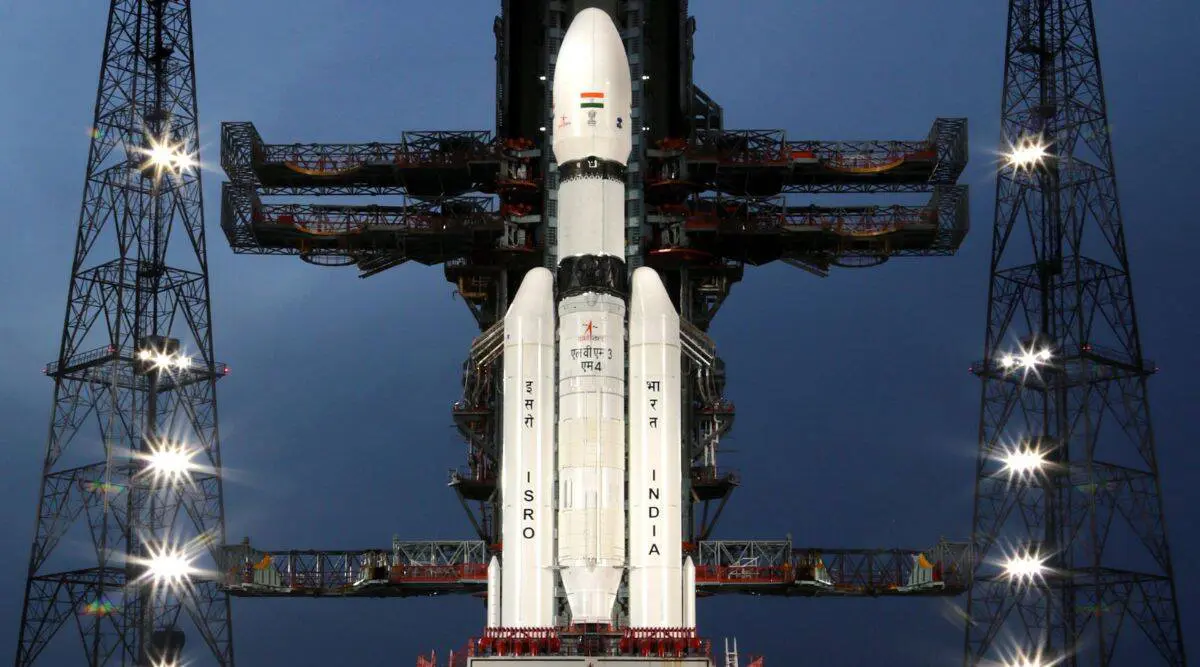The Indian Space Research Organisation (ISRO) is preparing to launch Chandrayaan-3, India’s third lunar exploration mission, on Friday.
From Satish Dhawan Space Centre in Sriharikota, Andhra Pradesh, the GSLV Mark 3 (LVM 3) heavy-lift launch vehicle will launch the moon lander and rover into space.
Countdown began on Thursday at 14:35:17 IST, ahead of Friday’s launch.
The Chandrayaan-3 mission will be ISRO’s follow-up attempt after Chandrayaan-2 failed during its soft landing on the moon in 2019.
The ISRO concluded its ‘Launch Rehearsal’ earlier this week simulating the entire launch preparation and process.
The Chandrayaan-3 spacecraft consists of a lander, a rover, and a propulsion module.
Eight payloads will be carried on ISRO’s third lunar exploration mission. Chandrayan 3 will carry out experiments on the Vikram lander (named after Space scientist Vikram Sarabhai) with four instruments, the Pragyan rover with two instruments, and the Propulsion Module or Orbiter with one.
Chandra’s Surface Thermophysical Experiment (ChaSTE) measures surface thermal properties on the Vikram lander, ILSA measures seismic activity around the landing site, Radio Anatomy of Moon Bound Hypersensitive Ionosphere and Atmosphere (RAMBHA) for studying gas and plasma environments, and NASA’s passive laser retroreflector array for lunar ranging.
In order to study the surface elemental composition, Pragyan (Saanskrit for Wisdom) will carry two instruments. In order to determine the elemental composition of lunar soil and rocks around the landing site, Alpha Particle X-ray Spectrometer (APXS) will be used, and Laser Induced Breakdown Spectroscope (LIBS) will conduct qualitative and quantitative elemental analysis in order to determine the surface’s chemical and mineral composition.
The Propulsion Module or the Orbiter will carry Spectropolarimetry of Habitable Planet Earth (SHAPE) to study Earth’s spectral and polarimetric measurements from lunar orbit. As a result, scientists can determine if exoplanets qualify for habitability by analyzing the light reflected by them.
On August 23, the spacecraft is expected to land on the moon after traveling about a month from Earth.
After landing, it will operate for one lunar day, which is equal to 14 Earth days.
According to K Sivan, former director of ISRO, Chandrayan-3 will boost the morale of programmes like Gaganyan, India’s first manned mission to space.
A unforeseen delay to the launch of Chandrayaan-3 was caused by the Covid-19 pandemic, which commenced in January 2020.
The Chandrayaan-1 mission, launched in 2008, was responsible for the discovery of water (H2O) and hydroxyl (OH) on the lunar surface, as well as their enhanced abundance near the poles.
The primary science objective of the mission was to prepare a three-dimensional atlas of both the near and far sides of the Moon and conduct chemical and mineralogical mapping of the entire lunar surface with high spatial resolution, according to Vikram Sarabhai Space Centre under ISRO.
A successful lunar mission by India will enhance life on Earth as well as allow the country to explore the rest of the solar system and beyond.
S Somanath, director of Indian Space and Research Organisation (ISRO), said earlier that if everything goes well, the spacecraft will land on the moon on August 23.
He added that if the landing is delayed, it may take place next month if the date is determined by the sunrise on the moon.
Also Read:
